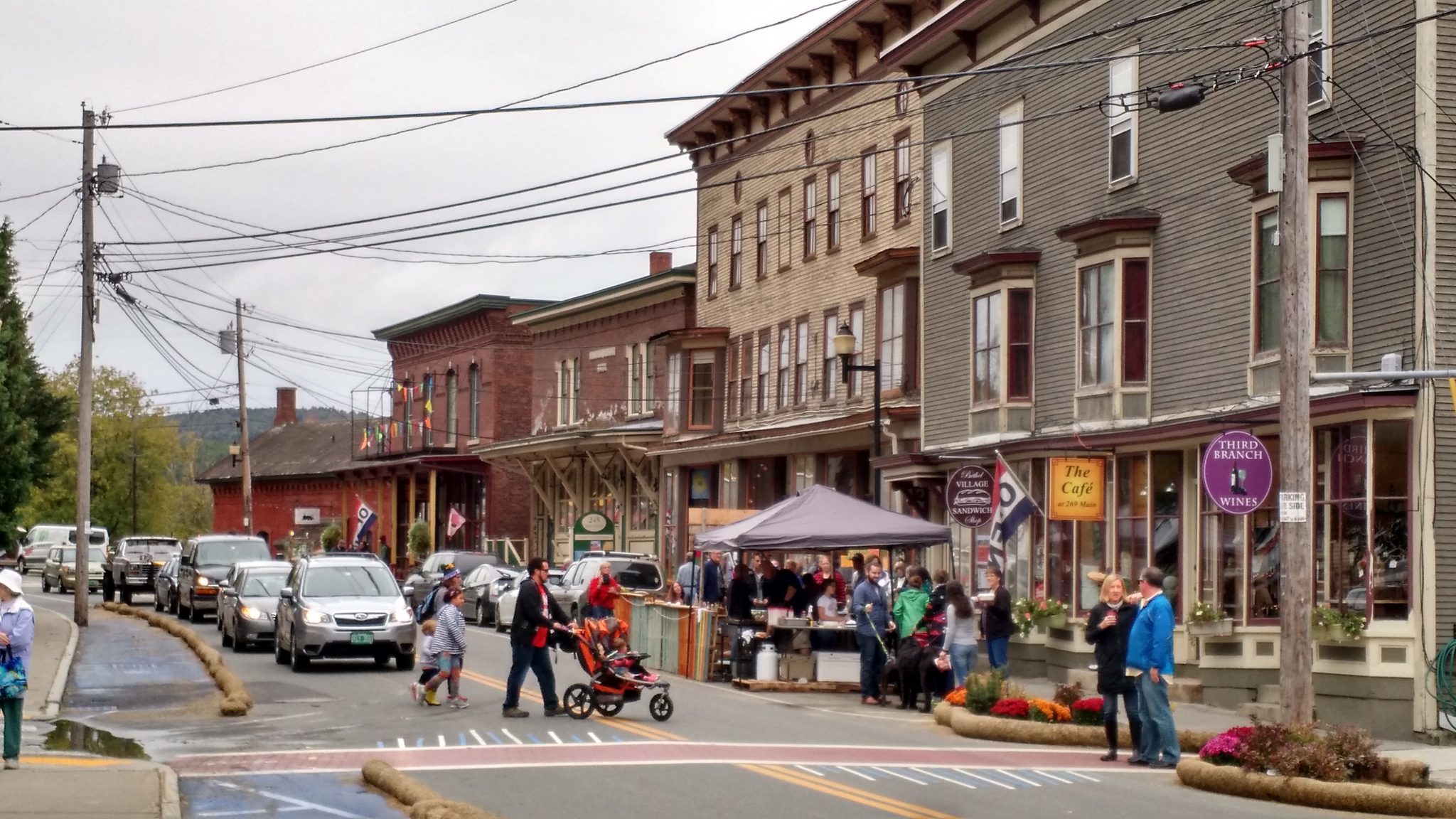The Vermont Natural Resources Council (VNRC) is exploring the potential of a legislative study to examine the feasibility of a land value tax in Vermont’s downtowns. In fact, VNRC first supported a land value tax study back in the early aughts! But before we get going: what is a land value tax?
Let’s start with why we’re talking about taxes in the first place.
Vermont’s current property tax structure may disincentivize the type of smart growth investments that our communities and environment need to thrive. The state property tax places a higher value on buildings than on the land they sit on, meaning that the owner of a well-maintained building pays more property tax than the owner of an adjacent vacant lot or neglected building. At the same time, both properties receive the same benefits of municipal infrastructure such as water services, roads, and sidewalks.
Because of this, Vermont’s villages and downtowns see:
- Limited improvement and rehabilitation of buildings that are current residential rental units, or that could be used for much-needed housing and economic revitalization;
- Vacant lots that could be used for infill development where there is existing municipal and state infrastructure investments;
- Land speculation, where investors hold onto valuable land and drive up prices; and,
- Sprawling development.
To help address this challenge, a “Land Value Tax” (LVT) can encourage compact development that leverages public investments in downtown infrastructure. A LVT is a property tax that falls only or mostly on the value of the land, instead of on the value of the buildings and improvements. This is also a more equitable approach to taxation that has been shown to revitalize communities and boost revenues for education and public services needed to attract and retain residents and businesses. VNRC is advocating for a feasibility study that includes a specific assessment of impacts on equity.
A LVT can help to achieve:
- Revitalization of Vermont’s villages and downtowns through rehabilitation of historic buildings, adaptive reuse, and infill development;
- Reduction of sprawl and related environmental impacts;
- Incentivizing the creation of affordable smart growth “missing middle” housing, such as duplexes and townhouses located in walkable neighborhoods; and,
- Capitalizing on the value created by municipal and state infrastructure investments and recovery of costs.
A LVT can be applied in specific regions, such as downtowns and village centers, to help achieve smart growth goals in these areas while having minimal impact on Vermont’s rural properties. By helping to increase the supply of homes in our walkable, compact community centers, a LVT could reduce homeownership and rental prices. More dense development would also benefit local economic development by enabling more people to live near work and bring in more individuals to community centers who may be looking for jobs. Plus, smart growth development is a critical climate solution: by reducing commuting and driving distances, we can decrease transportation-related greenhouse gas emissions, and aid in the conservation of working lands and natural areas.
Interested in the idea of a LVT? Check out these resources:
- What is a Land Value Tax? – Short video explanation (Strong Towns)
- Vermont Property Tax at a Glance – General overview of Vermont’s property tax (Lincoln Institute of Land Policy)
- Urban3 Presentation to Vermont House Committee on Ways & Means, 2/2/23 – Video presentation of how property tax policies can be assessed and improved to align with land use goals
- Urban3 Website – Experts in land use economics & visualizations
Special thanks to Reid Corliss, 2022 Sustainable Communities Intern, for helping to put this overview together!




